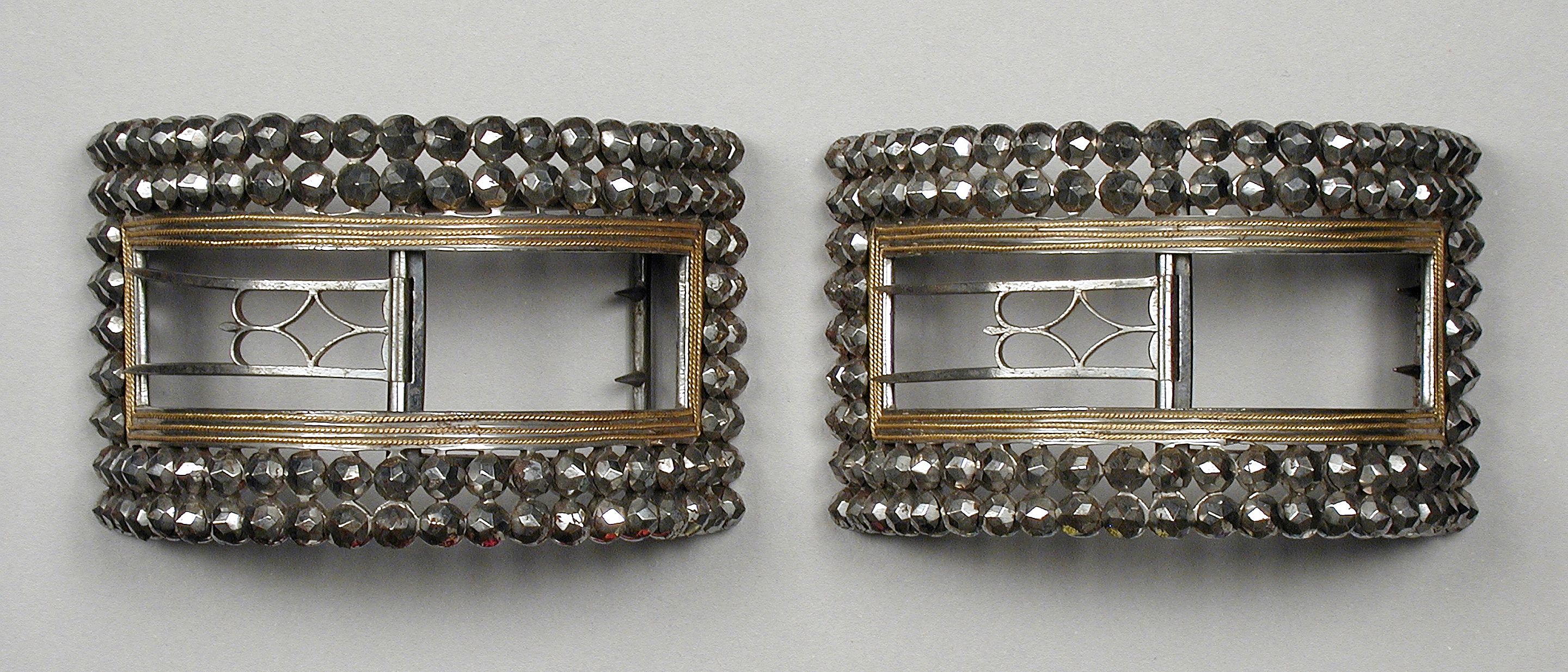The cheaper - and more affordable - versions were often made from brass or iron which could then be coated with tin to give it a silver-look. For the greater court events gold or silver were preferred; these would often be quite intricately made in themselves and often carried the maker's mark on them. As an indicator of how precious such buckles could be they were stored in jewelry-boxes.
Shoe Buckles
Until 1670 shoes had been tied with ribbon which was tied into large bows. Buckles became more in fashion by this period. The shape of the shoe buckles developed through the ancien regime. During Louis XIV they were largely rectangular but in the 18th century they became smaller and round. Finally, they retook the rectangular shape during Louis XVI by which they were also larger - so large that they covered the foot's length.
 |
| Women's shoes, 1740's |
At the mid-18th century the fashions for buckles became more splendid. Gemstones and paste were by now frequently used to decorate ornately spun shoe buckles. Although it was far from everyone at court who could afford to adorn their buckles with genuine gemstones some found a way to imitate the style. Coloured glass was often used as a substitute; most of the surviving buckles carry these glass-stones rather than the extravagant gemstones.
Certain gatherings kept their guests first-class by refusing to let "lace-shoed gentlemen" in; only those wearing silver buckles could gain admittance at such parties.
 |
| This shoe buckle from 1770 shows how elaborate the designs could be |
From the 1780's onward it became more common amongst men to replace shoe buckles with laces which fitted well with the emerging simpler fashion.
Knee Buckles
Buttons had been the primary method of "binding" breeches to the stockings underneath but buckles gradually became more popular around 1735. The fashionable men would attempt to match their knee buckles with those adorning their shoes. As it became the fashion to wear tight-fitting breeches knee buckles were also used to ensure a close fit.
 |
| Knee buckles, 18th century |
Hat Buckles
Usually, these were rectangular and made from lighter materials than the brass or iron used otherwise. This was mainly to avoid damaging the delicate fabrics often used for the fashionable hats as well as not weighing down the wearer's head.
Luckily for the fashionable people buckles had more than merely a good look to them; they could just as easily be used to fasten the increasingly elaborate hair accessories. The usage of hat buckles did not really come into style before the 1770's.
 |
| Men's shoe buckles, 1775-80 |
Mourning Buckles
In time of mourning it was considered in extremely poor taste to adorn one-self with ornaments. As such neither gemstones, pearls or paste were worn during mourning periods. Instead, they were bronzed.
As seen in portraits:
 |
| The knee buckle can just be seen to the left |
 |
| Detail of Louis XIV's shoe buckles |

No comments:
Post a Comment